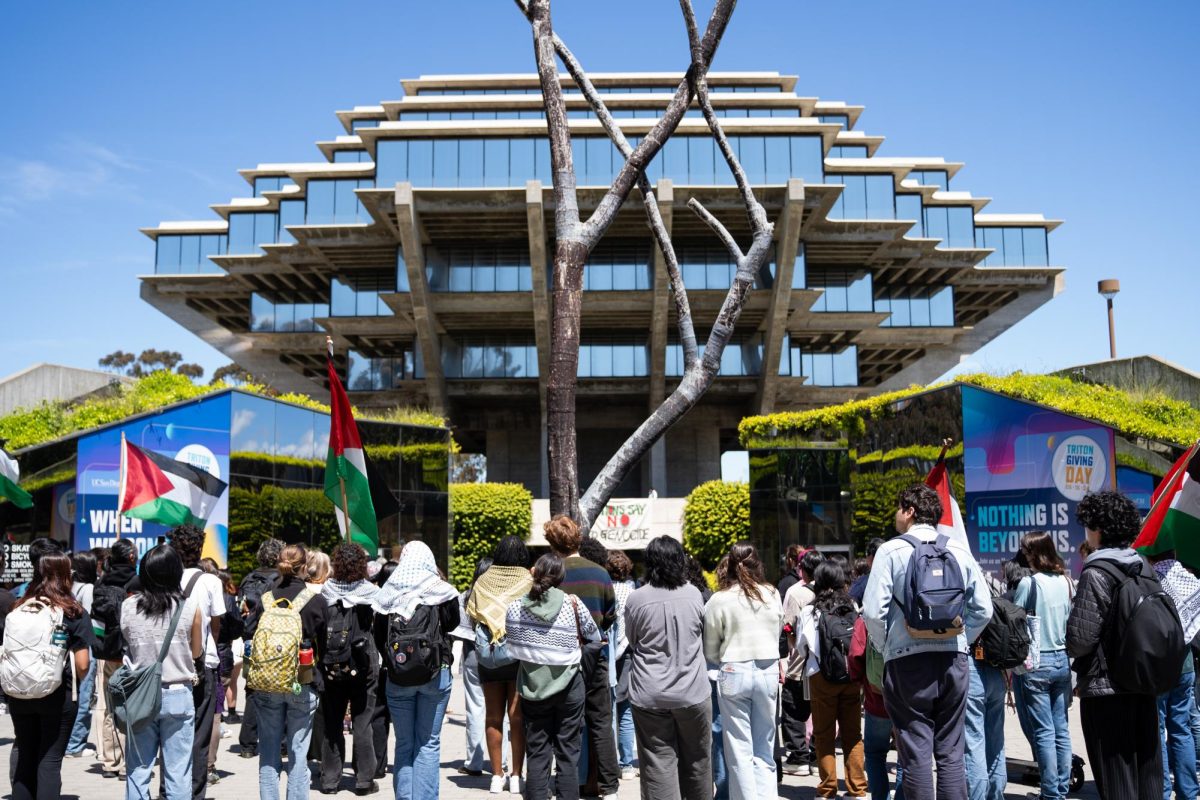— The first waves of the UC system’s 2004 update of its Long Range Development
Plan are just now fully being felt, and with that comes the importance of
charting the progress of the plan and its aims and directions. From a
universitywide point of view, the LRDP has received mixed reviews, but thus far
UCSD’s implementation of the plan has proven to be a paragon of university
expansion.
First created in 1963, the LRDP is now in its fifth edition,
and prepares the university to accommodate any demographic changes that may
occur through the 2019-20 academic year. The concept behind the LRDP is a good
one: It is a far-reaching plan that hopes to continually improve the UC system
as a whole, particularly the educational experience that each student receives.
However, the LRDP’s major flaw is that it does not give
campuses a detailed action plan for how to more forward with the LRDP. This
essentially gives the UC Board of Regents a blank check, allowing them to spend
money however they want in the name of progress. The document’s purposefully
ambiguous wording creates loopholes that allows the regents to abuse it,
potentially taking the UC system down a road that goes against the core
principles of the enlightened nature of public education.
During fall 2007, UC Santa Cruz found itself playing host to
a major manifestation of corrupt regents’ policies via the LRDP. The university
had begun the creation of a brand new Biomedical Science Facility, conveniently
located amid a beautiful, ancient redwood grove. Protesting students and
organizations had no problem with the idea behind the building, but were
outraged by the regents’ decision to ignore the environmental impact report
that specifically discouraged the creation of similar complexes in the existing
natural habitat. The ecosystem on the UCSC campus is a very delicate one, which
spurred the EIR to caution the UC system over disrupting it. The regents were
blinded by the glory and profit that a new science structure would bring and
pushed forward with their planned demolition of the redwood forest.
A huge protest was held at the anticipated construction site
— this rally wasn’t just a group of
hippies trying to protect the trees that they would have otherwise been
hugging, but an outpouring of support by environmentally aware students who
were enraged by the dishonest bureaucratic practices of the UC system.
While peaceful lines of civil disobedience formed around the
redwoods,
loose clouds of tear gas and arrested innocent students. This example of police
brutality should draw attention to the regents’ wrongdoings and should act as a
catalyst for UC campuses up and down the coast to mobilize against similar
actions under the banner of LRDP progress. In dealing with UCSC’s LRDP, the
regents showed an utter disregard for the ideas and input of students and
community members, and acted greedily in their own interests.
Fortunately for UCSD students, the local LRDP has been quite
successful in sticking to students’ interests and looks thus far to accommodate
the growing population without harming the environment. In drafting the
Diego
put in place land-use limitations regarding the natural resources that already
exist on campus.
The maintenance of UCSD’s natural beauty will prove to be a
huge issue while the LRDP attempts to expand the university to contain its
ever-growing student population. LRDP projections assume that the student body
at UCSD will jump to 32,700 by the year 2021, so the construction of new
facilities and housing necessary to contain those large numbers will have to be
done without tearing up the valuable surrounding environment.
Similarly, the LRDP has projected that the sheer size of the
UCSD campus will explode from 10.1 million gross square feet to an enormous
19.2 million GSF over the next 10 years. It would be easy to destroy the
remaining natural areas on campus, but again, the UCSD LRDP must be commended
for its insistence on restricting any construction on the numerous designated
ecological reserves found around campus. UCSD has not only made a point to save
its lands in the face of possible LRDP-sponsored bulldozers, but has also made
stipulations requiring the restoration of lands and parks in the area.
The LRDP’s vague nature leaves room for malicious abuse by
UC bureaucrats, but to date UCSD has avoided succumbing to the siren song of
corrupt LRDP policies and has set the standard for sustained development on all
UC campuses.
The UC system must retain its moral standing atop the mantel
of public universities; in order to do so it must follow UCSD’s lead and
guarantee the preservation of natural lands while continuing to expand and
develop all other physical aspects of the university.







